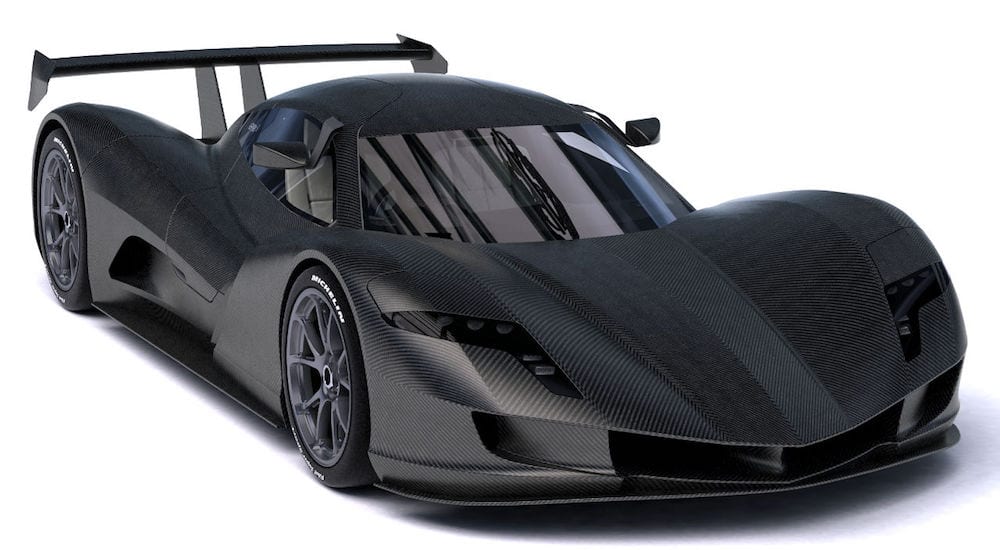As of October, the vast majority of current auto news was (understandably) generated from happenings at the Paris Auto Show. A steady stream of unwrapped 2019 offerings was accompanied by proactive glimpses into the near future courtesy of the expected array of concept vehicles. But amidst the blurring blend of progressively eco-friendly, hi-po’d and driver-assistive vehicles lurked one of the most interesting headlines of all. One that merges the most innovative of trending automotive technologies, while reminding you that it has done exactly that, by flashing a coma-inducing price tag.
Admittedly (and it’s shameful to say that, but) a $3.6 million car isn’t quite the shocker that it used to be. A Bugatti Chiron will run you upward of $3 million, while Lamborghini and Koenigsegg bring you up to the $5 million mark. But regardless of whatever precedent exists, Japanese-based automaker Aspark has stolen the spotlight with their new EV Hypercar, dubbed the “Owl.” Positioned to compete against Tesla’s Roadster and Rimac Concept_2, the Owl is more than just a pretty face. It has some serious performance numbers that are compelling qualified enthusiasts to lock in preorders. Interested? Don’t worry, you don’t need the whole $3.6 million upfront (you just need the $1.15 million deposit, and have until mid-2020 to come up with the balance).
That said, let’s kick off the introduction with some numbers.
- 1,150 horsepower
- 652 lb-ft of torque
- 0-60 mph in less than 1.99 seconds
- 186 mile range on a single charge
What we don’t know about the Owl are the specs on its (obviously) aggressive powertrain. As a hi-po hybrid, we can only assume its set-up will include a multi-motor build, but how many motors remains to be seen. The model shown in Paris was devoid of its propulsion system, presenting it as little more than aesthetic bait. But what effective bait it was.
Low and sleek, the most effective means of describing the Owl is that it seems less supercar and more Batmobile. With a menacing front end, sleek lines and swaggering rear fascia one can imagine that it’s just as impactful coming as it is going. 190-inches in length, 40-inches in height and 70-inches in width, there is no use in arguing whether or not it possessive of an aggressive stature. Low, and crouched upon its haunches the predatory stance of the Owl is befitting the Aspark’s contention that was offering up a game-changer. With its unapologetic styling and bold performance claims, the Owl is exactly that. But devoid of a drivetrain, there were certainly some questions as to the Owl’s final specs. Discrepancies in vehicle weight had it estimated around 3300 LBS despite Osaka’s use of an advanced carbon fiber shell and magnesium wheels, which were intended to help keep the weight under 2000 LBS. That said, we shouldn’t make any final assumptions until a production model is unveiled for further examination. it’s expected to be months before the engine configurations will be finalized. Even test drives for confirmed buyers won’t be available for another year. A leap of faith for sure, but one can only assume that, if the disposable income is there, one’s sense of urgency is certainly reduced. After all, even Batman started out with a stock vehicle back in 1939.

And if we describe the Owl in blatant comparison to comic-book fare, it’s because this low-slung two-seater is the stuff of pure fantasy. Designed seemingly from the imagination of a child, Aspark claims to have designed it as a slave to aerodynamics, playing within the rules and expectations while eager to break free.
But how does it measure up against the vehicles perceived as its prime competitors? Well, the Rimac Concept Two’s promise of a 1914 hp output with a 400 mile range (on a single charge) is hard to out-do. And with an estimated price tag of $2 million, it feels less daunting than the Owl. But preference in terms of aesthetics is subjective, and the Concept Two lacks the kind of hypercar design sensibility that some might demand. With smooth lines and a refined appearance, it’s more James Bond than Batman (not that one would consider that a negative) while managing to split the difference between the Owl and Tesla’s competitive offering.
Which brings us to the Tesla Roadster, Elon Musk’s ‘quickest car in the world’ which competes competently with both the Owl and Concept Two in terms of being a two-second car. And with a competitive top-speed of 250mph and a ‘top-dawg’ 620 mile range, it certainly has its bragging rights. A more streamlined and subtle design, the Roadster reads as the ‘Car of Tomorrow’ which is likely to be a huge selling point in the eyes of some. But like the Concept Two, it might be found lacking in the eyes of someone looking to make the boldest of statements. Either way, a starting price of $200,000 makes it a far more affordable option than the other two.
So, all things being equal, the Owl throws up some staggering numbers that allow it to compete with some of the most high-profile offerings out there. And the exclusivity of its limited run combined with its iconic design makes the crippling price tag relatively palatable for those whom such possessions are a reality. I mean, I could never afford one myself, but it’s certainly nice to think about. Then again, I always preferred Superman to Batman anyway…and the former doesn’t need a car in the first place. I guess that absolves me of any desire to pursue the Owl, but that shouldn’t stop you.
But, if you’re still interested in the Owl, and have already started your fundraising efforts, you’ll need to work faster. According to Aspark’s CEO, Masanori Yoshida the limited run of the Owl will be capped off at 50 units. I couldn’t tell you how many of those are already spoken for, but it should be enough to light a candle under you.
How’s that for motivation?
Yeah. Better get saving…



